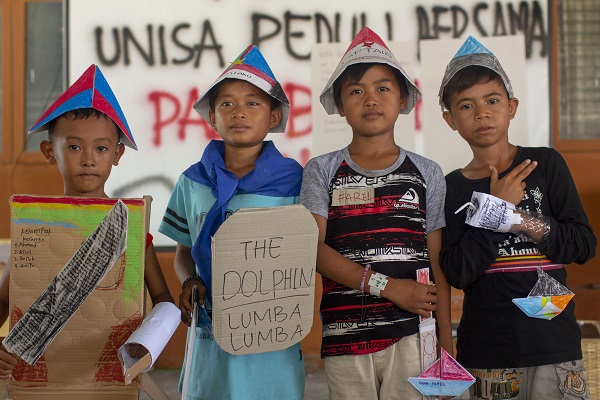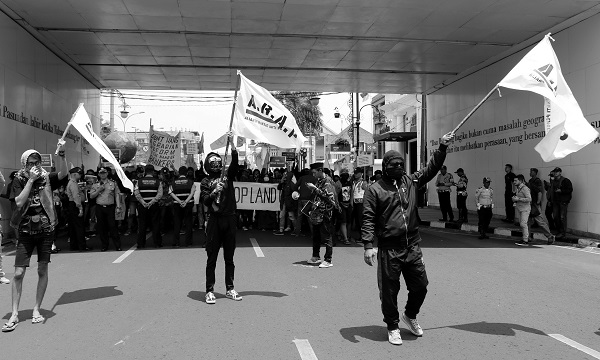Palu after the tsunami
Melanie Filler & Tim Barretto
For three days our team of four Australian and Indonesian friends drove along the coast from Makassar to the earthquake and tsunami devastated region of Central Sulawesi. We arrived in Palu within two weeks of the disaster.
The enormity of physical destruction was confronting, but what left the strongest impression were the hundreds of makeshift campsites that had emerged in the ruins. Families camped in open spaces everywhere; from front lawns of universities and mosques, to vacant lots and narrow courtyards in backstreets.
In the week that followed, we spent our time documenting the rhythms of life in a camp that sheltered the residents of Jl. Cumi-Cumi whose homes once stood a street back from the beach.


Restless children play in the rain. Their hyperactive energy crashes quick, fueled by weeks of poor nutrition, erratic sleep and listless uncertainty. Monsoon season is on the horizon and the weather wavers between brutal heat and heavy downpour flooding the makeshift tents.


Student volunteers visit the camp offering trauma healing sessions to children whose villages have been reduced to wreckage, their homes and schools destroyed indefinitely. A few hours of play, learning and affection brings incredible relief to the kids and their families. The children create captain costumes and sing about mastering the seas with resilience and courage. Some afternoons, it’s just the comfort of a shoulder ride from a friendly volunteer in place of a relative who may be traumatised, preoccupied or missing.


Kesya’s mother was selling fish at the market by the beach when the tsunami washed away their village. She is one of 1,075 people reported missing, though the real number is likely to be higher. Without a body and a burial it’s difficult for Kesya to grasp her loss. Evacuation teams continue to search for remains around the city, despite the government officially ending these efforts. Relatives gather in the rubble awaiting a recovery.


Akbar and his grandfather return to the ruins of their home, collecting clothes, keepsakes and scraps of wood to help weatherproof the camp tents. Families in the camp lived together on the same street, and whilst most are preparing for a long, uncertain stay, Akbar will be leaving any day. His mother is coming to take him to her home in South Sulawesi where he can continue school.


Families sort through donated clothes. The camp kitchen becomes a more vibrant place, as local shops restock their shelves, markets begin to bustle, and grocers travel between camps with fresh food on their bikes. After weeks of packaged noodles and biscuits, the women are excited to be cooking with fresh ingredients.
Melanie Filler and Tim Barretto are Sydney-based documentary filmmakers who just returned from the tsunami and earthquake devastated region of Central Sulawesi. Their film Aceh: beyond the tsunami explores the extraordinary stories of survivors of the 2004 Indian Ocean tsunami in the province of Aceh, Indonesia where approximately 170,000 lives were lost.
Credit for all images: Melanie Filler & Tim Barretto














